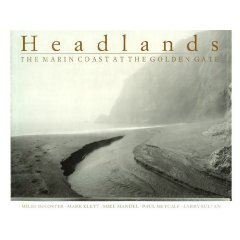
Kamau Brathwaite
We Press and Xcp: Cross-Cultural Poetics ($15.95)
by Anna Reckin
Kamau Brathwaite's ConVERSations with Nathaniel Mackey is an extraordinary and provocative reminder of the possibilities of the interview, unfolding this hybrid form to embrace critique, explication, history, autobiography, performance, and poem (the capitalization of "vers" in the title is no accident). The main text (the basic conversation, or "confessations" as Brathwaite starts to call it towards the end of the book) is a transcription of a public discussion between Mackey and Brathwaite at Poet's House, New York City, in 1993, and it follows the standard format, "introduction, question-and-answer, questions from the audience." But as soon as we read the first section, set up as a kind of prologue, we know that we are in a different kind of space. "If we don't reach this lecture in Time, we'll never be real," scolds one audience member (overheard on the way to the hall); while a child being dragged along to the event complains, "me still tryin memember this afternoon dreama."
The "dreama"/drama that is enacted here recapitulates Brathwaite's life, work, and politics by interweaving new (post-interview notes and previously unpublished work) and old (already published) materials around the transcription. In the process, the asides that are often edited out of written-up interviews are expanded, or even added in. A "note on colonialism/neocolonialism," for example, tells us, "it was Fanon, I think, echoed by Tsetsi Dangarembga (1988) [Af female writer] who speaks of colonialism as a ‘nervous condition.’ This Conversations is really my first (& unexpected, unintentional) effort to deal w/my personal relationship to this the first stage of colonialism—in our case coming out of Plantation Slavery" and introduces a so-far unpublished schema of the stages of colonization. The source for the note quoted above, "The Love axe/I" is, Brathwaite tells us, "forthcoming since the mid-'70s but ‘delayed’ by Estab pub strategies and now forthcoming hopefully 1998/89—but again under pressure—the text lost sev times—the author increasingly weakened w/age and other commitments etc etc etc." Every text has its history, personal and political.
If a transcribed interview is basically an act of retrieval, it is not surprising that this supremely self-reflexive text should pay so much attention to lost and missing materials, in particular, the devastating loss of books, papers, and audio tapes swallowed up by the mudslide that engulfed Brathwaite's home in Irish Town, Jamaica, in the wake of Hurricane Gilbert. Even more harrowing is the account of the break-in to Brathwaite's apartment in Marley Manor, Kingston, Jamaica, and the physical attack that followed. Alongside the story of lost texts and lost history, then, is a mythic account of psychic retrieval.
The main thrust of Mackey's questions concern the change that Brathwaite identifies in his work after 1986. Brathwaite's answer over the course of ConVERSations is first a reprise of his politics and poetics, especially the work in his first two trilogies; then he takes us through the series of calamities that afflicted him: the death of his wife in 1986, the disaster at Irish Town, and finally the events at Marley Manor in 1990. In effect, the gunshot wound killed him, he says; he is no longer the same person. It almost seems like a coup de grâce: the end of the road that started with the lyric intensities of much of his earlier work now grinding to a halt among the horrors described in Trench Town Rock (and quoted inConVERSations): robbers who chop off a living arm to get hold of a woman's bracelet, scavengers stealing from the dead at the site of car accidents. The quotation of "Flutes" from Middle Passages would seem to bear this out: a few pages after lines such as "that stutter I had heard in some dark summer freedom / startles & slips from fingertip to fingerstop / into the float of the morning into the throat of its sound," Brathwaite records the impact of the hurricane: "gone . suddem . flatten. juss like that . where golden bamboo flutes is now is bleak and wet and mud and dumb and silence silence silence silence As if some Powvr wish to wash away even her ashes here and no bird sing as if Naipaul right after all."
But this would be a capitulation to what Brathwaite describes—critiquing V. S. Naipaul and early work by Derek Walcott—as the classic Sisyphean statement of Caribbean poverty and hopelessness, based on inappropriate European dialectics. Caribbean culture should instead be seen as "tidalectic," he suggests, represented by the mythic image of a woman sweeping the sand from her yard, early every morning: "in fact performing a very important ritual which I couldn't fully understand which I'm tirelessly tryin to . . . And then one morning I see her body silhouetting against the sparkling light that hits the Caribbean at that early dawn and it seems as if her feet, which all along I thought were walking on the sand . . . were really . . . walking on the water . . . and she was travelling across that middlepassage, constantly coming from where she had come from—in her case Africa—to this spot in North Coast Jamaica where she now lives . . ." "Like our grandmother's—our nanna's—action," Brathwaite says elsewhere in the text, "like the movement of the ocean she’s walking on, coming from one continent / continuum, touching another, and then receding (‘reading’) from the island(s) into the perhaps creative chaos of the(ir) future."
The violence of Jamaica in the 1980s and 1990s, even the violence of the hurricane, is ebb, rather than end, according to this reading, and it is the poet's task to record those horrors, in all their gruesome details, along with the possibility of recuperation: "I undergo some strange kinda resurrection from that mo. It doan make me no kinda better poet nor anything like that—But since I’m died, a strange set of circumstances begin to make themselves shall we say ‘possible’ And I begin to dream, stepping on these stones of pearl and peril, back into each early morning, re/living, re/learning." Like the "nation language" Brathwaite describes in his essay, "History of the Voice"—"organic, . . . person-centered, fluid/tidal rather than ideal/structured"—ConVERSations performs an act of "re/living, re/learning," a washing back and forth (re-versing) over his life and his work. Alongside the personal history, we see Brathwaite developing and rethinking his poetics: the role of hieroglyphs, the Sycorax typeface, the "video style" that is such a prominent feature of his recent work. The result is total immersion: painful, exhilarating, utterly compelling.
Rain Taxi Online Edition, Fall 1999 | © Rain Taxi, Inc. 1999











